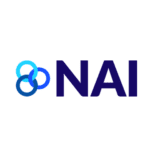Why Track Direct-to-Consumer KPIs?
In the dynamic landscape of the DTC industry, staying competitive and thriving requires a deep understanding of key direct-to-consumer (DTC) KPIs that drive success. By meticulously tracking and analyzing these KPIs, DTC brands can make data-driven decisions, refine strategies, and adapt to evolving consumer preferences. As the industry evolves, mastering these essential KPIs will remain instrumental in achieving sustainable growth and maintaining a competitive edge.
The Direct-to-Consumer Route:
The (DTC) industry (check out Shopify’s definition!) has witnessed explosive growth in recent years, driven by changing consumer preferences, digital transformation, and a shift in marketing strategies geared mainly toward capturing customers where their interests and ideals align with the point where they will act. As DTC brands continue to reshape traditional business models, measuring and optimizing performance becomes essential for sustained success. In this blog, we’ll explore the crucial Key Performance Indicators (KPIs) that play a pivotal role in the DTC industry.
So, come on, let’s explore some of the key direct-to-consumer (DTC) industry KPIs to keep an eye on.
Customer Acquisition Cost (CAC):
CAC measures the cost incurred to acquire a new customer. It encompasses various expenses, such as marketing spend, advertising, and sales efforts. Monitoring CAC helps DTC businesses gauge the effectiveness of their marketing campaigns and assess the efficiency of their customer acquisition strategies.
Customer Lifetime Value (CLTV):
CLTV represents the total revenue a customer generates throughout their engagement with the brand. It’s a vital metric for evaluating the long-term profitability of each customer relationship and guides decisions on marketing investments and customer retention strategies.
Churn Rate:
The churn rate measures the percentage of customers who discontinue their relationship with the brand over a specified period. Tracking churn rate helps DTC companies identify areas for improvement in product quality, customer service, and overall customer experience.
Conversion Rate:
Conversion rate indicates the percentage of website visitors who complete a desired action, such as making a purchase or signing up for a newsletter. A higher conversion rate indicates an efficient sales funnel and a compelling user experience.
Average Order Value (AOV):
AOV calculates the average amount spent by a customer per transaction. Monitoring AOV helps DTC businesses understand purchasing patterns, optimize pricing strategies, and design effective upselling and cross-selling initiatives.
Customer Retention Rate:
This metric quantifies the percentage of customers who continue to engage with the brand over time. A high retention rate implies customer satisfaction, loyalty, and repeat business.
Return on Ad Spend (ROAS):
ROAS measures the effectiveness of advertising campaigns by comparing the revenue generated from ads to the cost of running those ads. A higher ROAS indicates better ad targeting and creative strategies.
Inventory Turnover:
Inventory turnover assesses how quickly products are sold and replaced within a specific time frame. High inventory turnover indicates efficient supply chain management and helps prevent overstocking or stockouts.
Website Traffic and Engagement:
Social Media Engagement:
Likes, shares, comments, and follower growth on social media platforms reflect brand engagement and awareness. These metrics help DTC brands assess the impact of their social media strategies.
Net Promoter Score (NPS):
NPS measures customer satisfaction and loyalty by asking how likely customers are to recommend the brand to others. A higher NPS suggests a strong brand reputation and positive word-of-mouth marketing.




